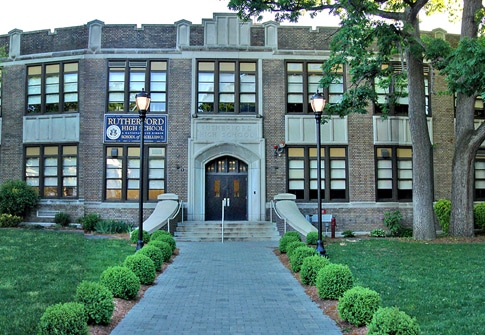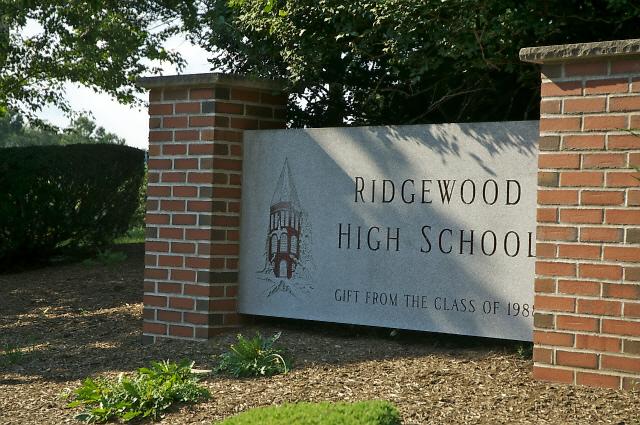
By Lindsey Burke, Neal McCluskey, Theodor Rebarber, Stanley Kurtz, William A. Estradaand Williamson M. Evers
Stop a federal bureaucrat, a schoolteacher, and a parent on the street and you will likely hear three different observations about what education can, and should, do. Considering these differing perspectives provides insight into why opposition to Common Core has been strongest among parents. National standards may provide useful information to state and federal policymakers, but have driven curriculum and pedagogy in a way that dissatisfies parents. Each of the essays contained in this short compendium delivers a different perspective on the shortcomings of the push for Common Core national standards, but each concludes that American education will not flourish under a system that is increasingly centralized.
ABOUT THE AUTHORS
Lindsey BurkeWill Skillman Fellow in Education
Domestic Policy Studies
Neal McCluskey
Theodor Rebarber
Stanley Kurtz
William A. Estrada
Williamson M. Evers
Introduction
What should education accomplish? The question has a narrow answer when the respondent is a federal bureaucrat, charged with counting academic outcomes in the aggregate to assess student performance relative to some national metric. But as the respondent gets closer to the student—or is himself the student—the answer is far more refined and paints a more nuanced picture of what individuals hope to achieve through education.
Stop a federal bureaucrat, a school teacher, and a parent on the street and you will likely hear three different observations about what education can, and should, do. The federal bureaucrat may respond in terms of what education should accomplish for the nation; the teacher might filter her response through the lens of her classroom; and the parent, naturally, will think in aspirational terms of what she hopes education can do for her child.
Considering these differing perspectives on the purpose of education provides insight into why opposition to Common Core has been strongest among parents and why national organizations and governors—responding to federal incentives to stick with the national standards and tests—have been slower to reverse course or even reconsider. National standards may provide useful information to state and federal policymakers, but they have driven curriculum and pedagogy in a direction that dissatisfies parents.
The Common Core State Standards Initiative was created by Achieve, Inc., and driven primarily by the Council of Chief State School Officers and the National Governors Association. The effort began moving forward in earnest in 2009, with the financial support of the Obama Administration. Following the introduction of Common Core, the Administration offered $4.35 billion in federal Race to the Top grant money, along with waivers from the onerous provisions of the widely derided No Child Left Behind Act.
Forty-six states signed on to Common Core, either enticed by the waiver/grant package dangled before them by Washington, or out of a belief in the project itself. Whatever the motivation, the Common Core standards, along with federally funded common assessments aligned to the standards, put American education on the path toward a national curriculum.
Some policymakers and many parents voiced concerns about what would surely lead to significant growth in federal intervention in education as a result of the federally funded Common Core push. As columnist George Will put it, Common Core is “the thin end of a potentially enormous federal wedge.”[1] As Will concludes:
It is not about the content of the standards, which would be objectionable even if written by Aristotle and refined by Shakespeare. Rather, the point is that, unless stopped now, the federal government will not stop short of finding in Common Core a pretext for becoming a national school board.
To improve education, choice is the only “common standard” that is needed. Parents should have choice among schools, teaching methods, and, critically, curricula.
The essays contained in this short compendium each deliver a different perspective on the shortcomings of the push for Common Core national standards, but each concludes that American education will not flourish under a system that is increasingly centralized. They are each adapted from talks delivered at The Heritage Foundation on November 19, 2014.
—Lindsey M. Burke
The March Toward Centralized Education
A historical review of federal education policy makes one fact clear: the trajectory of Common Core is a direct path to a federal curriculum.
During the colonial period and into the 1830s, education was something that was expected to occur in the home, in voluntary communities, in religious communities—the government, especially the national government, did not have a large role. Indeed, until about 1830 and the beginning of the Common School movement, education was something that was based in civil society. In the 1830s, Horace Mann became the “Father of the Common Schools,” and he and others pointed to Prussia, France, and the Netherlands to make their case for nationalized education. This is not to argue that Mann desired federal control, but in the common school model the germs of federal involvement in education are visible.
In 1867, the first iteration of the U.S. Department of Education was introduced. But within two years it was downgraded to just a bureau of education, the function of which was to collect statistics, not in any way control education. The next federal foray into K–12 education—though the law was more about higher education—would not come until almost a century later, with the 1958 National Defense Education Act (NDEA).
At this juncture, the federal government was still trying to find constitutional justification for its involvement in education by arguing its actions were, for instance, connected to defense, something over which the Constitution gives the federal government authority. In any event, the NDEA was the first time the federal government became significantly involved in trying to control education. This federal involvement was not limited to higher learning; it also encompassed K–12 education, driven by science, technology, engineering, and mathematics (STEM) issues, the justification being that the United States needed more scientists, more engineers, and better mathematicians.
By 1965, the federal government, through the Elementary and Secondary Education Act (ESEA), expanded its involvement beyond areas with explicit defense connections. Importantly, the government did not mention increased federal control over education; rather, funding was the primary justification for this expansion
In 1979, the Department of Education was created, largely at the behest at the National Education Association (NEA). The NEA was, at this point, a new teacher’s union (albeit a very large teacher’s union). When Jimmy Carter was elected President, power over education became further concentrated in Washington.
In 1983, with the publication of “A Nation at Risk,” further centralization of education in Washington became a moral imperative. People began to look to the federal government to fix the nation’s crippled education system. Shortly thereafter, the ESEA reauthorization required, for the first time, that states define achievement levels for federally supported students and identify schools in which students were not making acceptable progress.
In 1994, GOALS 2000 was proffered, which contained a small financial incentive for states to adopt standards and assessments. At the same time, the ESEA was reauthorized as the Improving America’s Schools Act, with an eye toward linking adoption of standards and tests to a state’s ability to acquire Title I funds. Meanwhile, the federal government funded the development of national standards in several subjects, but the history standards were pretty much reviled by the entire country, and Congress halted, at least for the moment, the overt move toward national standards.
In 2001, the debate over the No Child Left Behind (NCLB) Act began, and by January 2002 the legislation had been signed into law. The passage of the NCLB is a landmark moment for federal control in education, as, for the first time, Washington was to dictate state standards, while mandating state testing and yearly progress goals—even the breaking down of scores by sub-groups of students. The NCLB did not, however, prescribe what would be taught.
In July 2009, the Department of Education announced Race to the Top, which called for states to be evaluated on a number of criteria proposed by the Obama Administration. For example, states would now have to adopt common standards that were common to a majority of states. There was only one standard that met that requirement, so it was not stated specifically in the regulations; its identity, however, was obvious: Common Core. Race to the Top was followed by waivers from the NCLB, again attached, in part, to the adoption of common standards by states.
Why is Common Core problematic? As evidence from both inside and outside the United States makes clear, centralization and control do not work; rather, freedom is the force that sparks educational improvement. Freedom unleashes competition, which, in turn, drives innovation and leads to specialization. The idea that there should be one monolithic set of standards and that everybody should move at the same rate makes no sense, as anyone who has met more than one child can readily attest.
Moreover, real accountability, immediate accountability, comes from freedom, choice, the ability to leave a provider that is not giving you what you want and take your business elsewhere. That is why there are a lot of recommendations for what to do when states get rid of Common Core.
Ultimately, the solution to America’s education problems is not more centralization. Instead, the answer is to create school choice for everyone. Furthermore, America’s teachers need to be free to try different approaches, so they can focus on the needs of unique subsets of students. Funding should also be attached to students, so that parents can seek out those providers that are best for the unique needs of their child. Ultimately, this nation has moved in exactly the wrong direction. Americans do not need centralization at the national level; rather, we need to move to complete decentralization so we can treat children as what they are: unique individuals.
—Neal McCluskey
Instead of Nationalization, States Need to Provide Local Flexibility on Standards and Assessments
At the dawn of the educational standards and testing reform movement in the late 1980s and early 1990s, two very different arguments were advanced on behalf of state academic standards and tests as a replacement for what had been a local decision. These two arguments were based on different models for how reform based on standards and tests would impact schools and students.
The first of these models was advanced by Chester “Checker” Finn Jr., a former Assistant Secretary of Education in the Reagan Administration. Finn maintained that a shift to school choice—which he supported—required that parents be informed choosers; that as in any market, consumers must be able to make an informed choice in order for the market to be effective in promoting quality products and services. Within the education context, Finn argued, parental consumers would need to be informed by standards-based tests developed by the states in order to ensure their rigor and reliability. In this model, the standards-based assessments serve as an end-of-year quality check that parents can use to inform a decision to choose a different school for their child or to keep him or her in the same school. Because this model relies on market-based language, many conservatives, and even some libertarians, were persuaded to support the state standards and testing movement.
The second intellectual model for state standards and testing, referred to as “systemic reform,” was advanced by Marshall “Mike” Smith, who later became Undersecretary of Education in the Clinton Administration. In Smith’s model, as it was refined over time, curriculum standards serve as the fulcrum for educational reform implemented based on state decisions; state policy elites aim to create excellence in the classroom using an array of policy levers and knobs—all aligned back to the standards—including testing, textbook adoption, teacher preparation, teacher certification and evaluation, teacher training, goals and timetables for school test score improvement, and state accountability based on those goals and timetables.
As it turned out, it is the second model that now predominates and drives instruction in most public schools and districts. Rather than a state-validated metric used to inform parental choice at the end of the school year, state academic standards became a blueprint according to which schools and classrooms operate throughout the year as well as a tool used by policymakers to oversee them from above. The disappointing track record of this approach in achieving its ambitious goals resulted, in 2009, in its adherents proposing national—rather than state—academic standards and testing: Common Core.
As the full effects of standards-based “systemic reform” were felt in state after state since the implementation of the federal NCLB, opposition—including from parents—has grown. Parents support testing when they can use it as one piece of information among others to evaluate whether the needs of their children are being met. Such usage has been the historical role of testing in private schools, where it does not drive the curriculum or school operations. If the results are not what parents expect, they are free to discuss the matter with the school’s educators and, if not satisfied, transfer their child to a different private school. Parents continue to support this use of testing; however, support for standards-based tests as a major, even dominant, focus of instruction and academic operations is now declining. Standards are, after all, not well-designed as a roadmap for instruction. Indeed, from the standpoint of many parents, having your child reduced to a decimal point in a state accountability formula used by bureaucrats to judge your school is problematic. Parents do not support such testing because it does not necessarily meet the needs of their child; in fact, such rigid formulas are often not very useful in evaluating overall school quality either.
Common Core defines and constrains the content and sequencing of the curriculum—and, in many cases, even the instructional methods—to such an extent that the distinction is disingenuous.
The Singapore math standards, for example, require mastery of the standard algorithm for addition and subtraction at early elementary grades. (On this point, they are generally consistent with the standards of other high-achieving Asian countries.) In first grade, Singapore starts with applying the standard algorithm to addition of 2-digit numbers. The expectation is increased to 3-digit numbers by second grade, followed by 4-digit numbers in third grade. Singapore increases expectations gradually, teaching conceptual understanding as well as computational fluency.
Common Core has a dramatically different approach, even though it claims to be internationally benchmarked. It delays mastery of the standard algorithm for addition and subtraction until fourth grade. Why? At earlier grades, Common Core has students practicing until fluent various “non-standard” approaches, typically based on place value, with the goal of teaching conceptual knowledge. After spending their early elementary years on these alternative approaches, in fourth grade, students are suddenly expected to demonstrate mastery of the standard algorithm with large numbers. Such questionable, unproven approaches should not be mandated nationwide.
Apart from particular topics, Common Core encourages the teaching of all mathematics through an approach that is at odds with what is used in high-achieving nations. Andrew Porter, a scholar who largely subscribes to Common Core’s instructional philosophy—the modern version of instructional progressivism—performed a systematic comparison of all of the Common Core math standards with those of top-achieving nations. He found striking differences in emphasis across grade levels. At the eighth grade, for example, 75 percent of the curriculum standards in high-achieving countries address the “doing” of math—such things as solving word problems or equations. At the same grade level, only 38 percent of the Common Core standards addressed “doing” math; instead, Common Core placed much greater emphasis on such things as talking about math. Common Core is not consistent with international standards.
The bottom line is that these critical curricular differences are at the core of what schools do: both what is taught and how. Schools must be able to differentiate in these crucial areas, offer parents a meaningful choice, and compete to see which best serves the needs of each student.
Instead of states mandating a single curricular approach within their geographic boundaries—much less a single national approach such as Common Core—states should empower local school systems and other educational providers to select quality standards and aligned tests that fit their instructional philosophy, while also empowering parents to choose from among different schools the one which best meets the needs of their children.
—Theodor Rebarber
Curriculum Constriction: Common Core and the Advanced Placement Program
Americans today are divided about the meaning of our history. This division appears to be growing, and represents a significant challenge for our society. Yet, the genius of the Founders was to devise a system that grants citizens at the levels of the state, the school district, and the classroom the freedom to teach not only history, but also every other subject as they see fit. So America’s constitutional system is adept at accommodating our divisions over the meaning of our history, but only for as long as we cherish and protect the principles of federalism, local control, and freedom they embody.
Sadly, these great principles now face a challenge. Until recently, debate over the creeping nationalization of the school curriculum has focused on Common Core. In the fall of 2014, however, the College Board, the nonprofit entity that creates and administers the SAT and Advanced Placement (AP) tests, released a detailed, controversial, and highly directive “framework” for the teaching of AP U.S. History. Prior to this, AP U.S. history teachers were able to follow a brief topical outline that allowed our national story to be taught from a wide range of perspectives.
The release of the new AP U.S. History framework stirred up a national debate. Traditionalists and conservatives criticized the framework for giving short shrift to both the Founding and our fundamental constitutional principles, for highlighting America’s foibles and failings at the expense of our strengths, and for downplaying America’s distinctive characteristics.
Let us first consider the question of which subjects fall under the purview of Common Core. While Common Core is meant to have implications for the teaching of reading and writing in the sciences, in social studies, and in technical classes, for the most part, Common Core is about English and math.
Common Core’s architect, David Coleman, has become president of the College Board. Under Coleman’s leadership, the College Board has begun to radically redesign all of its Advanced Placement exams, not just AP U.S. History. Ultimately, this transformation will also include subjects such as Physics, World History, European History, U.S. Government and Politics, and Art History. So in effect, Common Core covers English and math, while the College Board’s AP subjects cover the rest of the curriculum.
It is important that we do not lose sight of what is happening here in a haze of semantics. No doubt we will be told that AP U.S. History is not formally part of Common Core. That is merely an evasion, like all the other evasions Common Core advocates have thrown up to obscure the federal power grab that has been driving Common Core.
We need to bring the College Board and the AP redesign process into the center of the debate over Common Core. The distinction between Common Core and the AP redesign effort is artificial and only serves to insulate the College Board from public accountability.
We also need to take steps on both the state and federal levels to break the College Board’s monopoly on Advanced Placement testing. After all, even Common Core, which is far too nationalized as it is, has two testing consortia. Yet the College Board is the only company to offer AP testing. And as of now, state and federal governments channel tens of millions of dollars to the College Board, making it in effect a government-supported monopoly.
Congress needs to see to it that its AP testing subsidies are distributed in a way that encourages competition rather than preventing it. Furthermore, states need to consider authorizing the development of alternative AP tests that can compete with those developed by the College Board.
It is time to wake up and realize that Common Core has radically expanded its reach, capturing the entire spectrum of the curriculum, not in name, but in fact. If we are ever to restore local control and public accountability to America’s education system, the College Board’s recent power grab must be a central component of the debate over Common Core.
—Stanley Kurtz
Common Core Even Impacts Those Who Have Chosen Something Different Than Government Schooling
Common Core is good for homeschooling.
In 1999, the National Center for Education Statistics found that there were 850,000 homeschooled students in the United States. Thirteen years later in 2012, the National Center for Education Statistics (an arm of the Department of Education) found that there were 1.8 million homeschool students in the United States.[2] Now homeschooling is growing, and, as those of us who have been fighting Common Core know, 2012 is about the time when Common Core began to be implemented. All of a sudden, Common Core was being foisted upon kids and families in the public schools of states that had adopted the standards.
Homeschooling is skyrocketing. In Alabama, for example, it was reported that growing numbers of families are choosing to homeschool their children in part because of concerns about Common Core in their states.[3] Genevieve Wood reported at The Daily Signal that in North Carolina, where numbers are starting to come out for the 2013–2014 school year, they have seen a massive increase in the number of students who are being homeschooled over the previous year. There were 60,950 homeschoolers in North Carolina in the 2013–2014 school year, a 14.3 percent increase from the prior year. There are now almost 100,000 homeschooled students in North Carolina.[4]
In a recent article in Politico about moms winning the battle of Common Core, there appeared the following great first sentence: “The millions have proven no match for the moms.”[5] Moms and dads—whether in public schools, in private schools, or in homeschools—are frustrated. Parents are losing local control over the education of their children. They are losing the ability to do something as simple as homework with their kids. And now, they are voting with their feet.
The playful opening sentence of this article—that Common Core is great for homeschooling—is true on one level: Yes, homeschool numbers are increasing. But Common Core also threatens the foundation of homeschooling.[6]
Specifically, there is language in federal law—the Elementary and Secondary Education Act—that says that nothing in the act will apply to homeschoolers and private schools that do not receive federal funds.[7] The current Common Core effort has applied solely to the public schools thus far, but if proponents are successful at establishing a nationalized one-size-fits-all approach to education, policymakers will likely inquire as to why homeschoolers and private-schoolers are not taking the same tests. How do we know, the argument will go, that these children are receiving a good education?
Some of the other concerns that we are seeing are tests (SAT, ACT, PSAT) being re-aligned to Common Core.[8] Will homeschoolers be disadvantaged even though they have received an excellent education?
Then there is the concern from school districts misinterpreting these policies. Westfield, New Jersey, for example, tried to force homeschoolers (who are independent of the public school system) to follow Common Core. The Home School Legal Defense Association intervened, and Westfield backed off its outrageous demand. This incident, however, is but a preview of what homeschoolers will face in a truly nationalized education system.[9] Finally, there is also the issue of student databases.[10] Many of the same people who were concerned about Common Core are also concerned about this parallel rise of the loss of control over students’ private information.
In an actual slide presented at a conference in Orlando, Florida, in 2011, the Counsel of Chief State School Officers, which was heavily involved, along with the National Governors Association and Achieve Inc., in pushing Common Core, discussed their recommendations for how to improve their statewide databases with the goal of having national databases. The slide read: “Include student groups not now included, e.g. homeschooled, in the data system.”[11] There is a push, when it comes to centralized education, to include all students (homeschool, public school, and private school) in these databases.
In an effort to be free from Common Core and its onerous mandates, more and more parents are removing their children from America’s public schools. But this battle against Common Core does not just concern homeschoolers—all families, no matter whether their children attend a public school, a private school, or a home school, must work together in this struggle against the standardization of education. As the Supreme Court held in Pierce v. Society of Sisters, the right of parents to direct the education and upbringing of their children is a fundamental right. If we lose control over what our children are being taught, then we have lost that fundamental right.
—William A. Estrada
Common Core: Blocking “Exit” and Stifling “Voice”
One of the most influential and most cited books in social science in the past 50 years is economist Albert Hirschman’s Exit, Voice, and Loyalty.[12]
Hirschman’s book discusses how individuals respond to a situation in which the services on which they rely are deteriorating. The book provides valuable conceptual tools for analyzing the design of the Common Core national curriculum-content standards.
Hirschman points out that the two basic responses to deteriorating services are “exit” and “voice,” where exit means turning to a different provider or leaving the territory, while voice means political participation.[13]
Exit usually has lower costs than voice for the individual. But here we should add the limiting case: Exit can have high costs when individuals are loyal to institutions—thus the third component in Hirschman’s trio of “exit,” “voice,” and “loyalty.”[14]
With exit, you can simply turn to a different provider or move to a different place (sometimes quite nearby, sometimes afar). Such a move is sometimes called “voting with your feet.”
Loyalty can be strong in politics, but it can also be lost.[15] Think of the American Revolution and the breaking away of the United States from the British Empire.
In the 1830s, when Alexis de Tocqueville visited America from France, he found Americans intensely loyal to, and participating in, their public schools. These Americans saw the public schools as extensions of their families and neighborhoods. They viewed public schools—even though public schools in those days usually charged a fee—as akin to voluntarily supported charities and as part of what Tocqueville then, and social scientists today, call “civil society.”[16]The public in those days saw public schools as something quite separate from distant political elites in faraway state and federal capitals.
Tocqueville feared that if ever Americans neglected their participation in associations or local government entities like school committees, the tendency would be toward a loss of liberty and a surrender to what Tocqueville called a “mild despotism.”[17]
Today, many years after Tocqueville, public sentiment about the public schools still retains much of the feeling of “loyalty” that people had in Tocqueville’s day, a feeling that fuels the current passion for local control. Yet—not surprisingly, given the public school monopoly—parents and taxpayers view the public schools as an unresponsive, declining bureaucracy carrying out edicts from distant capitals.[18]
This monopoly problem in public school education was precisely why economist Milton Friedman called for opportunity scholarships (also known as vouchers) to create a powerful exit option.[19]But even in the absence of opportunity scholarships and charter schools, competitive federalism has, in the past, created exit options.[20]
Common Core undermines the exit option and undermines competitive federalism. Indeed, in part, it was designed to do so. It likewise evaded and negated the voice option during the adherence process—and continues to do so. The designers of Common Core wanted nationwide uniformity. States have to adhere to the Common Core in toto because of boilerplate memorandums of understanding. A few topics can be added, but none can be subtracted or moved to a different grade.
There is no feedback loop and no process to consider and implement proposed changes.[21] Any proposed nationwide fixes would have to be negotiated between the National Governors Association and the Council of Chief State School Officers jointly, as well as each of the adhering states. Such a process is prohibitively difficult to put into practice. Therefore, frustrated constituents who have complaints about the merits of Common Core have no place to exercise their voice in a way that would lead to repair or what Hirschman would call “recuperation.” Instead, critics are driven to oppose the curriculum content of Common Core as a whole.
But as Lenore T. Ealy writes, “regardless of the merit” of the Common Core national standards, “it still matters…whether there are rights of exit.”[22] The policymakers of this malign utopia forgot a few things. They forgot that the desire for voice—the desire for political action—can become particularly intense when people are faced with the prospect of “nowhere to exit to.”[23] They forgot that hemming in parents and teachers would create a demand for political change, alternatives, and escape routes.[24]
Alternatives to the national tests have arisen. Organized parents are pressing for repeal of Common Core and the dropping of the national tests that support it. Some states are already rejecting the national tests.[25] States are also struggling to escape the Common Core cartel itself.[26] Parents are opting out of the Common Core tests.[27] Indeed, what Hirschman calls an “intimate fusion of exit and voice is already underway.”[28]
Ultimately, public response to the imposition of Common Core may bring about what Hirschman calls “a joint grave-digging act.” As of this writing, exit and voice are working hand in glove against Common Core. Perhaps, to use another of Hirschman’s metaphors, “exit” and “voice” will “explode jointly” and “bring down the whole edifice.”[29]
—Williamson M. Evers
About the Authors
Lindsey M. Burke is the Will Skillman Fellow for Education in Domestic Policy Studies, of the Institute for Family, Community, and Opportunity, at The Heritage Foundation. Neal McCluskey is director of the Center for Educational Freedom at the Cato Institute. Theodor Rebarber is CEO and founder of AccountabilityWorks.Stanley Kurtz is a Senior Fellow at the Ethics and Public Policy Center and a contributing editor to National Review Online. William A. Estrada is director of federal relations at the Home School Legal Defense Association. Williamson M. Evers is a Research Fellow at Stanford University’s Hoover Institution and a former U.S. Assistant Secretary of Education for Planning, Evaluation, and Policy Development. This essay contains considerable material from longer research projects on the history of efforts to establish a national curriculum in America (sponsored by the Pioneer Institute) and on the history of conservatives and the public schools in America (sponsored by the Hoover Institution). A condensed version of this essay appeared in Education Week, January 14, 2015.















